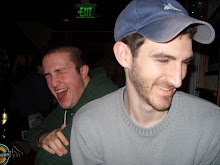What we need, fundamentally, is not simply stricter regulation or less greedy bankers. What we need is better economic theory of how these things play out, so that the regulators have better tools to assess and prevent systemic risk. But that's not how we're thinking right now. What we're looking for is not better tools, but someone to blame.
Because, after all, we know that it wasn't us who was at fault. We're just the victim of broad market forces outside our control.
The one culprit I think she left out is the credit rating agencies -- like Fitch, Moody's and Standard & Poors -- who were giving what we now know were extremely risky CDOs awfully high investment grades. I still don't understand how these companies' risk formulas managed to hit so dangerously off the mark. Some of these CDOs were given the same AAA rating that U.S. Treasury bonds receive.
Maybe the broader lesson here is that we shouldn't expect mathematical certainty when we're assessing human activity . . .

2 comments:
It sounds like each aspect of the market modeled their behavior after Clone High Principal Cinnamon J. Scudworth: "I saw the first half of the M.C. Hammer Behind the Music, and if there's one thing I learned about money, it's that it never runs out!"
You would think that a few of the higher-ups at these institutions would have been in place long enough (or studied enough history) to realize that these events weren't going to be permanent. Then again, perhaps some did, but the banks that realized this probably wasn't a sustainable practice had to keep up with the risky banks just to keep attracting dangerously optimistic customers.
I agree with you
Post a Comment